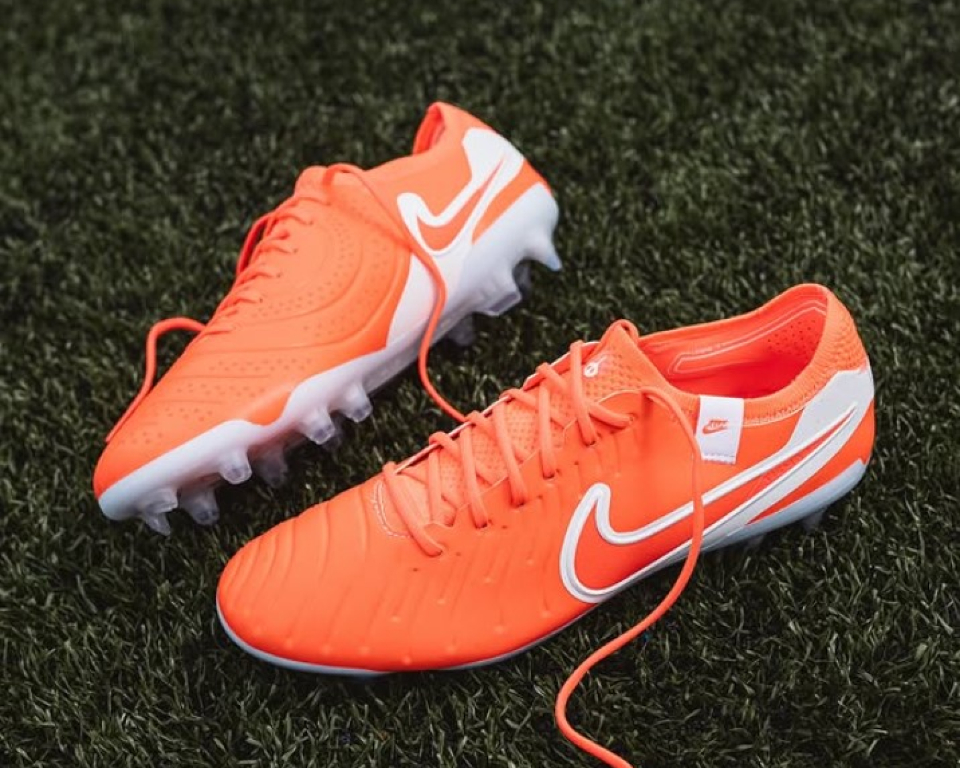With so many styles and models out there, choosing the right rugby boots can feel overwhelming — especially when you’re not sure what actually suits your position.
But don’t worry, you’re not alone. At The Full 80, we’ve created a 4-step position-specific guide to help you figure it out fast.
Whether you’re scrummaging in the tight five, jackaling in the back row, or lighting it up from full-back, there’s a boot tailored for your style of play.
And when you find the right fit? It’s not just about comfort — the right boots help you move cleaner, hit harder, and stay sharper across every phase.
Let’s break it down by position so you can hit the pitch in the perfect pair.

Know Your Position
Your position shapes the way you play — and the boots you wear should match that. Front-row players need grip and protection. Back-rowers want something lighter to cover ground and stay strong in contact. Backs look for speed, sharp footwork, and clean connection on the ball.
So whether you’re scrummaging, tackling, kicking, or finishing, scroll down, pick your position, and find a pair that suits how you play.
#1. Front Row
First up — the foundations of the scrum. Front-rowers need boots that prioritise traction and toughness above all.
Think 8-stud soleplates for serious traction, stiff footplates to ensure no power is lost when you’re driving, and a thick upper to help shield you from those inevitable stud clashes.
A prime example that ticks all the boxes is the adidas Kakari RS — designed specifically for front-row power.
It’s purpose-built for the tight five and loaded with features that let you dominate in the scrum.

But remember, it’s not just about one specific model—any front-row boot worth its salt should offer those essentials:
- Multiple studs for rock-solid grip.
- Rigid construction to channel every ounce of force forward.
- Protective upper so you can focus on the contest, not the contact.
Look for these traits, and you’ll be on the front foot—literally—every time you pack down.
#2. Second Row/Back Row
If you’re a workhorse in the engine room or a roaming threat in the back row, you need boots that blend power with speed. You still want solid stability for scrums and contact, but without the extra heft of a front-row boot.
A top contender is the Canterbury Speed Infinite Elite Soft Ground. These boots are built with an ultra-light monomesh upper, reinforced by targeted stitching and a VAPOSKIN membrane, making them 25% lighter for enhanced agility across the pitch.
The Flightbeam soleplate, powered by Pebax® materials, unleashes explosive energy response, delivering stability and drive when you need it most—ideal for those intense tackles and lineouts.

An unrestricted heel profile allows for fluid movement, while zonal padding, a knitted collar, and an Ortholite® footbed ensure breathability and comfort during prolonged phases of play.
Key features to look for in a second/back row boot include:
- Lightweight construction that boosts mobility.
- Stable, responsive soleplate for secure pushing-off in contact.
- Reinforced forefoot or targeted stitch zones for impact protection.
So if you need a boot that balances agility and muscle, the Canterbury Speed Infinite Elite has you covered—power where you need it, speed where you want it, and comfort all the way through.
#3. Inside Back
Precision matters here — inside backs control territory, distribute the ball, and often take the kicks. Your boots should reflect that.
You need a boot that offers a clean strike zone for drop-kicks, punts, and place-kicks, but still keeps you quick on your feet for those sniping runs and clever passes.
A perfect example is the adidas RS15 Pro.
It features unique rubberised 3D Grip Elements over a large contact area and an asymmetric lacing system, creating the optimal surface for precise ball contact.
This is especially handy when you’re looking to dictate territory with a well-placed punt or execute that decisive drop-kick.

Generally, inside back boots differ from heavier forward models by offering:
- Fewer studs for reduced weight and quicker footwork.
- Lightweight materials (often thinner) to boost agility.
- Conical or mixed-stud configurations that help you pivot and accelerate in tight spaces.
Because you’re less likely to be in heavy scrummaging or mauling positions, the trade-off in lower overall protection is a fair price to pay for enhanced speed and kicking accuracy.
If you’re serious about controlling the game through the boot, the adidas RS15 Pro checks every box—power, precision, and freedom to move.
Alternative Inside Back Boots
Sometimes you want a different approach to your kicking surface—and that’s where the Nike Tiempo Legend comes in.
Renowned for its versatility, the Tiempo pairs a FlyTouch Plus leather upper with slimed-down foam pods to provide cushioned feel on the ball, giving you exceptional control when launching a pass or placing a kick deep into opposition territory.
In fact, the added protection from the leather construction is so robust that you’ll even see some front-row players lacing them up, though their lighter structure still suits fly-halves who prioritize comfort and precision.

Here’s why they’re a strong option for an Inside Back:
Versatile Design: Ideal for kickers looking for a different surface, without compromising on agility or support.
Leather Upper: Adapts to your foot over time, offering a snug, personalized fit and a plush touch on the ball.
Enhanced Protection: While it’s not a dedicated forward’s boot, the extra padding is a plus if you find yourself in a bit of contact.
#4. Outside Backs
Speed wins space. If you’re a winger or full-back, your boots need to be lightweight, responsive, and built for acceleration
As an outside back, your role often revolves around speed—covering ground quickly and out-maneuvering the opposition in open play. That’s why boots with a lighter profile and a stud pattern geared toward rapid acceleration and agile footwork are crucial.
A standout option is the Mizuno Morelia Neo IV. Its minimalistic design and carefully arranged studs provide the grip you need for sudden changes in pace, while the reduced weight helps you maintain momentum over longer sprints.
The result? A boot that lets your pace do the talking while keeping grip and comfort locked in.

When evaluating boots for outside backs, consider:
- Low overall weight to maintain pace.
- A stud layout that supports quick stops and sharp turns.
- Flexible construction to ensure comfort at high speeds.
The predominant focus for outside backs boots is to help you become faster, quicker and more agile.
Conclusion
Choosing the right rugby boots can transform your performance—just match the design to your position.
Front-row players rely on uncompromising traction and protection, second/back rows need a strong-yet-mobile balance, inside backs thrive with precise kicking surfaces, and outside backs chase every extra ounce of speed.
That’s exactly why we created The Full 80’s 4-Step Guide: to cut through the guesswork and help you zero in on boots that suit your style of play.
Get the right boots on, and you’ll spend less time thinking about your footing — and more time making an impact.
